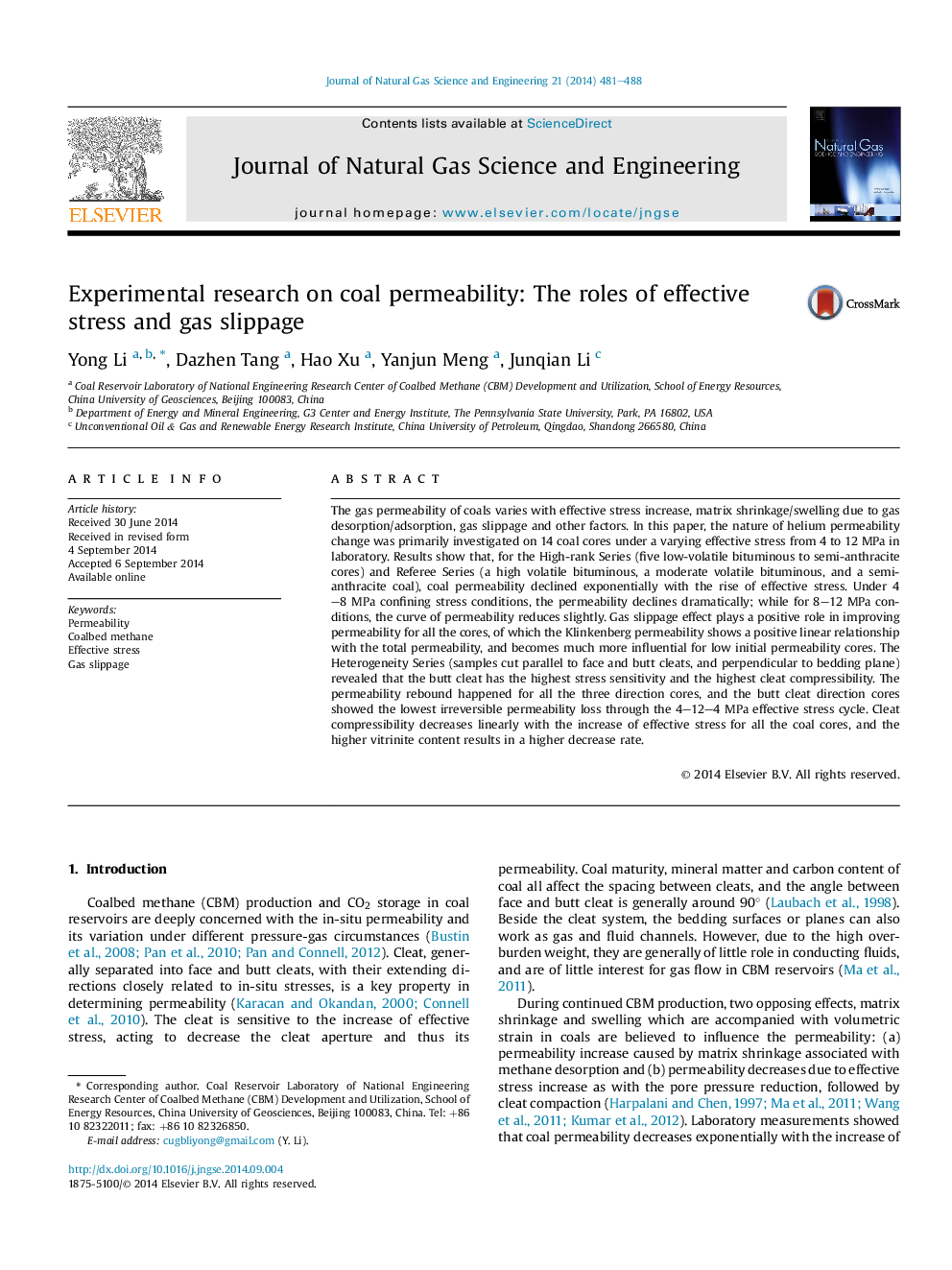| Article ID | Journal | Published Year | Pages | File Type |
|---|---|---|---|---|
| 8129269 | Journal of Natural Gas Science and Engineering | 2014 | 8 Pages |
Abstract
The gas permeability of coals varies with effective stress increase, matrix shrinkage/swelling due to gas desorption/adsorption, gas slippage and other factors. In this paper, the nature of helium permeability change was primarily investigated on 14 coal cores under a varying effective stress from 4 to 12Â MPa in laboratory. Results show that, for the High-rank Series (five low-volatile bituminous to semi-anthracite cores) and Referee Series (a high volatile bituminous, a moderate volatile bituminous, and a semi-anthracite coal), coal permeability declined exponentially with the rise of effective stress. Under 4-8Â MPa confining stress conditions, the permeability declines dramatically; while for 8-12Â MPa conditions, the curve of permeability reduces slightly. Gas slippage effect plays a positive role in improving permeability for all the cores, of which the Klinkenberg permeability shows a positive linear relationship with the total permeability, and becomes much more influential for low initial permeability cores. The Heterogeneity Series (samples cut parallel to face and butt cleats, and perpendicular to bedding plane) revealed that the butt cleat has the highest stress sensitivity and the highest cleat compressibility. The permeability rebound happened for all the three direction cores, and the butt cleat direction cores showed the lowest irreversible permeability loss through the 4-12-4Â MPa effective stress cycle. Cleat compressibility decreases linearly with the increase of effective stress for all the coal cores, and the higher vitrinite content results in a higher decrease rate.
Related Topics
Physical Sciences and Engineering
Earth and Planetary Sciences
Earth and Planetary Sciences (General)
Authors
Yong Li, Dazhen Tang, Hao Xu, Yanjun Meng, Junqian Li,
